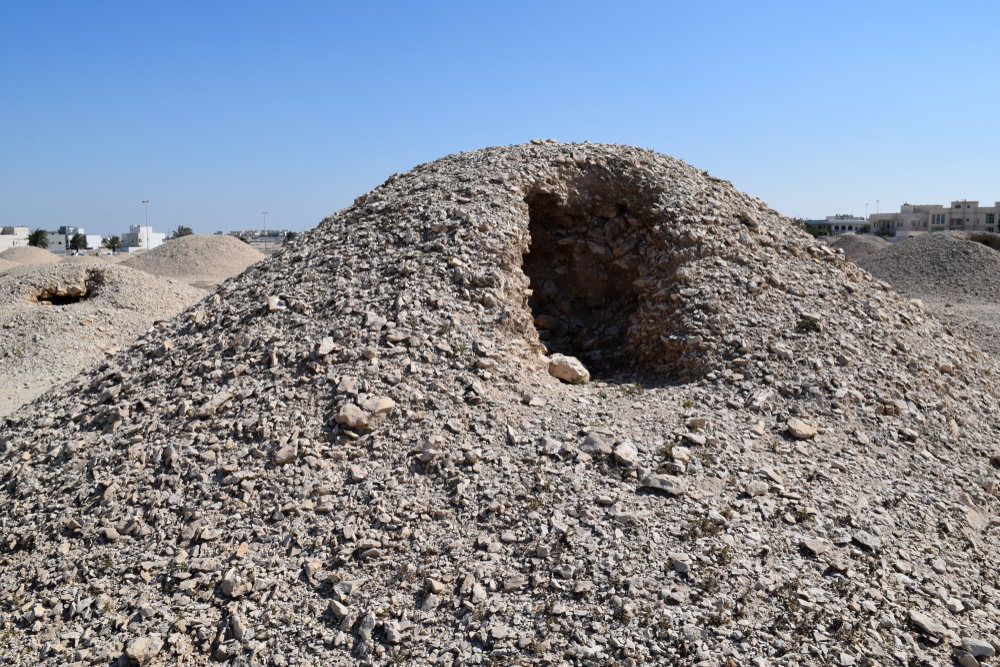Dilmun Burial Mounds
You can’t get around Bahrain without spotting at least one burial mound. They appear like small conical hills, and they usually occur in groups—sometimes, hundreds of them together.
The burial mounds date back to the period of the Dilmuns, who were an ancient Semitic-speaking culture in Arabia during the 3rd millennium BCE. Historical evidence suggest the Dilmun civilization were located in the Persian Gulf, on a trade route between Mesopotamia and the Indus Valley Civilization, and was an important trading center for more than 2,000 years.

The Dilmun Burial Mounds, Bahrain.
The northern half of Bahrain’s main island is where most of these burial mounds are located. These necropolis once covered vast stretches of land several square kilometers in size and were easily one of the largest cemeteries in the ancient world. Archeologists estimate that there could have been as many as 350,000 grave mounds across Bahrain at one point.
Although they are referred to as mound, these burial tombs were originally cylindrical low towers. Royal mounds were constructed as two-storied sepulchral towers forming a ziggurat-like shape, and were larger in size and had elaborate burial chambers. Additionally, the shape, style, and size of the mounds varied from region to region.
Although it is hard to establish a firm timeline for all these variations and continuations, the general consensus is that the mounds were constructed during the Early Dilmun Period over a period of 450 years, approximately between 2200 and 1750 BCE. The burial mounds built around the 2nd millennium BCE bear witness to the flourishing Early Dilmun civilization reflected in the extensive necropolis and the variety of graves. The grandest of them all, the royal mounds, were built during this period of economic importance.

Photo: Melanie Münzner/Think Heritage
In the last sixty years, ninety percent of these funerary hills have fallen victim to development. As population of this arid country grew from 143,000 individuals in 1960 to 1.2 million in 2010, ancient necropolis were razed to make room for housing, highways, and other infrastructure.
"There is huge pressure to build houses for the expanding population. It's an issue that's probably present in other counties, but it's exacerbated in Bahrain because of how little land is available," an archaeologist told CNN.
In a bid to help preserve these monuments, Bahrain's Ministry of Culture petitioned the UNESCO, in 2016, to grant World Heritage Status to the Dilmun Mounds. In 2019, the wish was granted and some twenty individual sites were inscribed under UNESCO’s World Heritage Sites list. Altogether, these protected sites contain more than eleven thousand burial mounds.

Partial excavated burial mound in Saar village, Bahrain.

A disintegrated Dilmun Burial Mound in A'ali. Kingdom of Bahrain.


